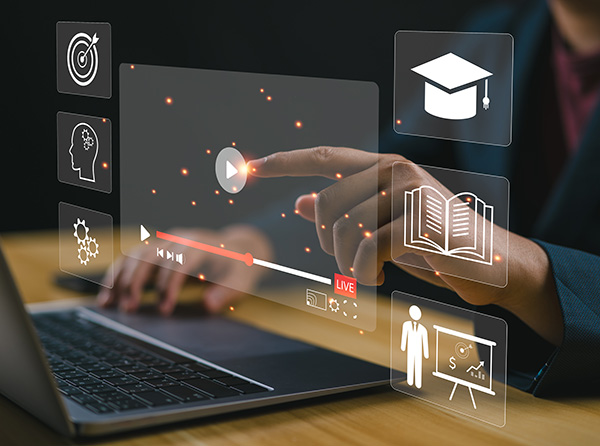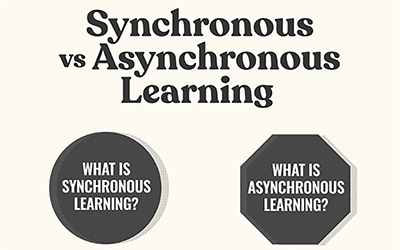Asynchronous Overview


Differences between Asynchronous and Synchronous Learning
Asynchronous Learning Examples
Instructors can deliver content using their own recorded lectures (audio and video), own textual content with graphics and audio, resources from YouTube, Khan Academy, LinkedIn, open educational resources (OERs), and free resources from Creative Commons (CC).
Engaging Students in an Asynchronous Course
Although not taking place in real time, asynchronous learning still allows the opportunity for feedback and engagement. Learners are free to share thoughts and questions with instructors and fellow learners, though they may not receive an immediate response. Some activities that can keep students engaged are:
Asynchronous Teaching: Advantages for Instructors
Asynchronous Learning: Advantages for Students
Disadvantages of Asynchronous Learning
Further Training
Digital Learning Innovations invites KSU Faculty to participate in the Sustainable Course Design (SCD) Workshop. This is an online, asynchronous, 3-week course designed to provide participants with technical and pedagogical skills for designing and developing a foundation course using effective course design elements.
By the end of this workshop, participants will have designed and developed the Start Module, one module/unit of their choice, an accessible course syllabus, a communication and feedback plan and a course alignment map for an upcoming course they have chosen to work on.
This workshop focusses on sustainable design that supports building a base course that can be used to teach in any modality, because it incorporates “sustainable” features which can be used in various course modalities.
Sign-Up For Sustainable Course Design WorkshopResources
Source: Lawless, C. (2020, April 23). Synchronous vs asynchronous learning: Which
is right for your learners?
Retrieved from: https://www.learnupon.com/blog/synchronous-learning-asynchronous-learning/

References/Recommendations
Arshavskiy, M. (2013). Instructional design for eLearning: Essential guide to creating successful eLearning courses. Your eLearning World.
Dirksen, J. (2015). Design for how people learn (2nd edition). New Riders.
Lawless, C. (2020, April 23). Synchronous vs asynchronous learning: Which is right for your learners?
Priscila. (2020, July 22). Synchronous vs asynchronous learning: What’s the difference.